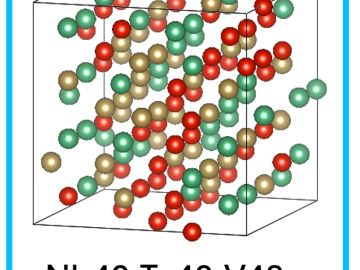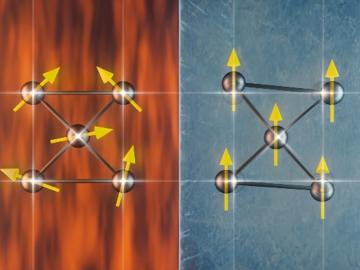Filter News
Area of Research
- Advanced Manufacturing (1)
- Biology and Environment (3)
- Clean Energy (8)
- Electricity and Smart Grid (1)
- Fusion and Fission (24)
- Fusion Energy (15)
- Isotopes (1)
- Materials (9)
- Materials for Computing (1)
- National Security (11)
- Neutron Science (3)
- Nuclear Science and Technology (8)
- Sensors and Controls (1)
- Supercomputing (6)
News Topics
- (-) Fusion (60)
- (-) Microelectronics (4)
- (-) Security (26)
- 3-D Printing/Advanced Manufacturing (133)
- Advanced Reactors (35)
- Artificial Intelligence (107)
- Big Data (66)
- Bioenergy (94)
- Biology (105)
- Biomedical (64)
- Biotechnology (25)
- Buildings (69)
- Chemical Sciences (75)
- Clean Water (31)
- Climate Change (110)
- Composites (32)
- Computer Science (205)
- Coronavirus (46)
- Critical Materials (29)
- Cybersecurity (35)
- Decarbonization (89)
- Education (5)
- Element Discovery (1)
- Emergency (2)
- Energy Storage (113)
- Environment (206)
- Exascale Computing (49)
- Fossil Energy (6)
- Frontier (49)
- Grid (68)
- High-Performance Computing (101)
- Hydropower (11)
- Irradiation (3)
- Isotopes (57)
- ITER (8)
- Machine Learning (55)
- Materials (152)
- Materials Science (151)
- Mathematics (10)
- Mercury (12)
- Microscopy (51)
- Molten Salt (9)
- Nanotechnology (60)
- National Security (76)
- Net Zero (15)
- Neutron Science (144)
- Nuclear Energy (111)
- Partnerships (54)
- Physics (66)
- Polymers (33)
- Quantum Computing (40)
- Quantum Science (76)
- Renewable Energy (2)
- Simulation (55)
- Software (1)
- Space Exploration (25)
- Statistics (4)
- Summit (63)
- Sustainable Energy (133)
- Transformational Challenge Reactor (7)
- Transportation (100)
ORNL's Communications team works with news media seeking information about the laboratory. Media may use the resources listed below or send questions to news@ornl.gov.
1 - 10 of 89 Results

Kathryn McCarthy, director of the US ITER Project at the Department of Energy’s Oak Ridge National Laboratory, has been awarded the 2024 E. Gail de Planque Medal by the American Nuclear Society.

A study led by the Department of Energy’s Oak Ridge National Laboratory details how artificial intelligence researchers created an AI model to help identify new alloys used as shielding for housing fusion applications components in a nuclear reactor. The findings mark a major step towards improving nuclear fusion facilities.

U2opia Technology has licensed Situ and Heartbeat, a package of technologies from the Department of Energy’s Oak Ridge National Laboratory that offer a new method for advanced cybersecurity monitoring in real time.

ORNL is the lead partner on five research collaborations with private fusion companies in the 2024 cohort of the Innovation Network for FUSion Energy, or INFUSE, program. These collaborative projects are intended to resolve technical hurdles and develop enabling technologies to accelerate fusion energy research in the private sector.
Researchers at ORNL recently demonstrated an automated drone-inspection technology at EPB of Chattanooga that will allow utilities to more quickly and easily check remote power lines for malfunctions, catching problems before outages occur.

John joined the MPEX project in 2019 and has served as project manager for several organizations within ORNL.

The award was given in “recognition of his lifelong leadership in fusion technology for plasma fueling systems in magnetically confined fusion systems.”

At ORNL, a group of scientists used neutron scattering techniques to investigate a relatively new functional material called a Weyl semimetal. These Weyl fermions move very quickly in a material and can carry electrical charge at room temperature. Scientists think that Weyl semimetals, if used in future electronics, could allow electricity to flow more efficiently and enable more energy-efficient computers and other electronic devices.

Oak Ridge National Laboratory has named Troy A. Carter director of the Fusion Energy Division in ORNL’s Fusion and Fission Energy and Science Directorate, or FFESD.

ORNL researchers completed successful testing of a gallium nitride transistor for use in more accurate sensors operating near the core of a nuclear reactor. This is an important technical advance particularly for monitoring new, compact.

